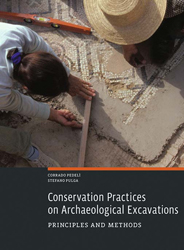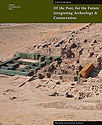Excavations: Principles and Methods

Corrado Pedelì and Stefano Pulga,
translated by Erik Risser; 2013
Read Online
Download PDF
Purchase a Copy
Find in WorldCat
The relationship between archaeology and conservation has long been complex and, at times, challenging. Archaeologists are often seen as interested principally in excavation and research, while conservators are concerned mainly with stabilization and the prevention of deterioration. Yet it is often initial conservation in the field that determines the long-term survival and intelligibility of both moveable artifacts and fixed architectural features.
This user-friendly guide to conservation practices on archaeological excavations covers both structures and artifacts, starting from the moment when they are uncovered. Individual chapters discuss excavation and conservation, environmental and soil issues, deterioration, identification and condition assessment, detachment and removal, initial cleaning, coverings and shelters, packing, and documentation. There are also eight appendixes.
Geared primarily for professionals engaged in the physical practice of excavation, this book will also interest archaeologists, archaeological conservators, site managers, conservation scientists, museum curators, and students of archaeology and conservation.
How to Cite this Work
Pedelì, Corrado, and Stefano Pulga. 2013. Conservation Practices on Archaeological Excavations: Principles and Methods. Translated by Erik Risser. Los Angeles: Getty Conservation Institute. http://hdl.handle.net/10020/gci_pubs_conserv_practices





